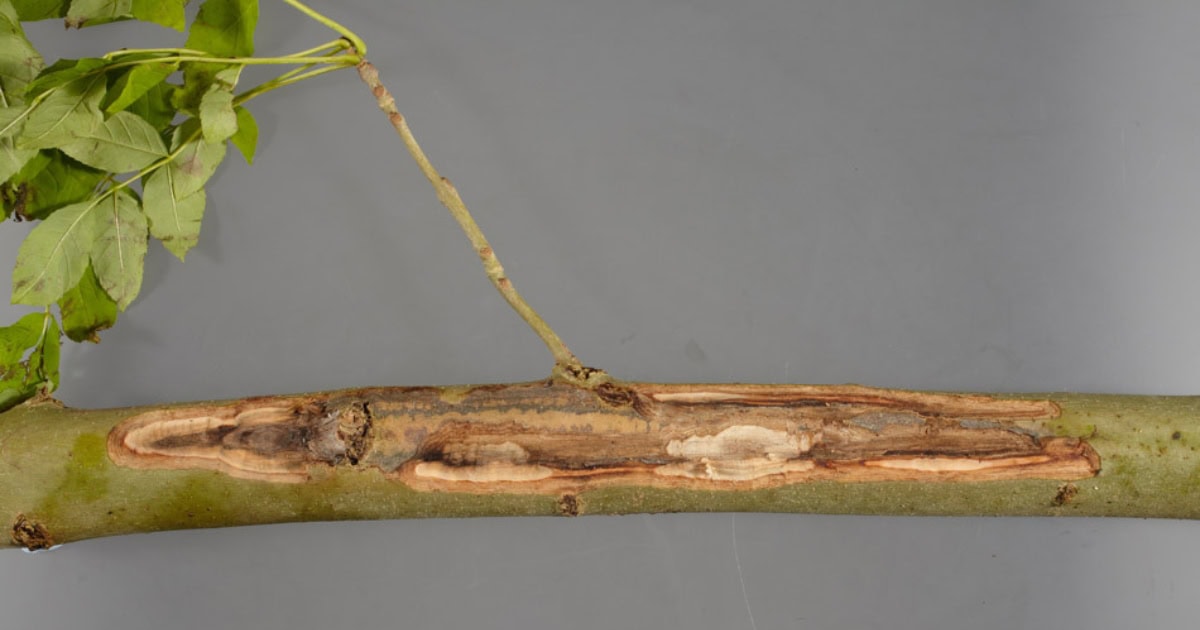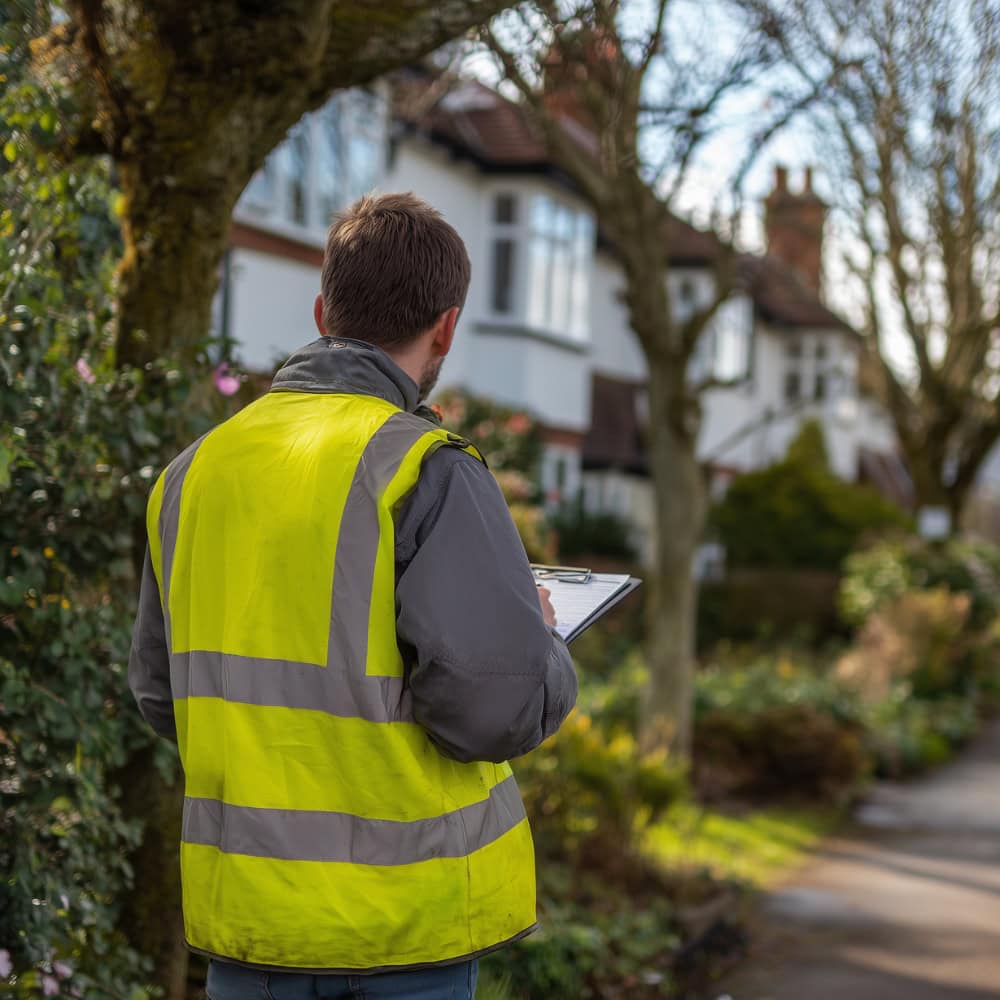Ash dieback secondary agents: honey fungus and structural decline

Introduction
Definition: Ash dieback is a disease of ash (Fraxinus excelsior) caused by the fungus Hymenoscyphus fraxineus. It kills shoots and creates stem and basal lesions that weaken the tree. Those lesions are open doors for secondary agents—especially honey fungus (Armillaria species)—which can turn slow decline into a structural hazard far sooner than many owners expect. (Forest Research; Forestry Commission, United Kingdom Government guidance). Forest Research GOV.UK
You care because risk climbs fastest when more than one pathogen is at work. The primary disease knocks the tree down. The secondary agent kicks it over.
Ash dieback symptoms — what to look for, and when
Start with timing. Mid to late summer—July through September—is the best window to spot fresh symptoms. Look for: blackened, wilting “flags” on shoots; diamond-shaped lesions on twigs and small stems; patchy crown dieback with tufted regrowth; and sometimes basal cankers at ground level. Take clear photographs—good, sharp pictures help decisions later. (Forest Research; Forest Research “Chalara manual – Pictures”). Forest Research
Older trees can show a passable crown while serious damage advances out of sight at the base. Ivy and long grass hide problems; a careful ground-level inspection matters.
Ash dieback lookalike: drought scorch, salt splash on roadside trees, and Nectria cankers can mimic leaf and bark symptoms. The seasonal black flag shoots and the classic diamond lesions are strong clues that it is the real thing. (Forest Research). Forest Research
Secondary agents that accelerate decline
Ash dieback opens the door; honey fungus walks through it. Armillaria species colonise stressed tissue around basal lesions and the root collar. Once in, they digest roots and the lower stem, undermining anchorage. Signs to look for:
- White, sheet-like mycelium just under the bark at the base.
- Black “bootlace” rhizomorphs under bark or in the soil.
- Honey-coloured toadstools in clusters in late summer and autumn (not always present). (Royal Horticultural Society). RHS
United Kingdom Government and professional guidance are clear: when assessing ash with dieback, check for lesions and honey fungus near the base—these weaken trunks and make trees more prone to falling. (Forestry Commission; Arboricultural Association). GOV.UK trees.org.uk
Recent research supports what many of us see on the ground. A peer-reviewed study in 2025 reported synergistic negative effects where ash dieback and Armillaria occur together, with rot of the stem base and roots and a greater tendency to uproot or snap in storms, especially in trees with marked crown loss and basal necrosis. A 2024 review also notes links between dieback and Armillaria infection in affected ash. (Spiegel et al., 2025; Combes et al., 2024). ScienceDirect Oxford Academic
Ash dieback lookalike: other decay fungi can attack the base on various hosts—for example, brittle cinder (Kretzschmaria deusta) on lime and beech. Correct identification matters because risk timelines and management choices differ.
What does ash dieback look like on a risky tree?
Do not judge by the crown alone. On a risky tree—one near a drive, a public road, a garden seating area, or a Public Right of Way—watch for structural red flags:
- Sunken, swollen or cracked patches at the base, sometimes on the leeward side.
- A hollow or drummy sound at the butt when tapped by a professional using a mallet.
- Movement at the root plate during wind (observe from a safe distance).
- Rhizomorphs or white mycelium under bark at ground level; and in some seasons, toadstools. (Royal Horticultural Society). RHS
Field studies and practitioner guidance align: basal and root decay translate to instability—the kind that fails under wind load rather than slowly shedding twigs. This is the point where evidence-led management becomes a safety issue, not a cosmetic one. (Spiegel et al., 2025; Forestry Commission). ScienceDirect GOV.UK
Ash dieback lookalike: windthrow from shallow rooting on saturated clays—common in parts of North West England—can resemble pathogen failure. The tell is the decay pattern: stringy or laminated tissue with Armillaria; a cleaner plate failure where the issue is mainly soil and root architecture.
A grounded vignette from North West England
Last autumn near Garstang, we inspected a mature roadside ash beside a farm access track and a Public Right of Way. The crown looked passable—about forty percent loss. Ivy hid a broad basal lesion. A careful peel-back revealed a white mycelial sheet and scattered rhizomorphs. The landowner drove under it daily. We arranged a controlled removal between showers the same week. Once felled, the root plate was largely decayed—enough that the next storm would likely have finished it.
What to do if you suspect secondary agents (practical steps)
- Observe in season. Take clear photographs in July, August and September, plus year-round pictures of the base. (Forest Research). Forest Research
- Check the base. Carefully clear ivy and grass; look for lesions, rhizomorphs, and white mycelium under the bark. (Royal Horticultural Society). RHS
- Record the targets. Note drives, parking areas, play spaces, buildings, roads and Public Rights of Way—risk is about what could be hit.
- Book a professional survey. Ask for a ground-level inspection with stability appraisal; add decay detection where indicated.
- Decide early near targets. Where Armillaria is present at the base, plan works before autumn storms. Keep it evidence-led, not alarmist. (Spiegel et al., 2025). ScienceDirect
- Follow the rules. Check for a Tree Preservation Order or Conservation Area protection and whether a felling licence applies; keep a paper trail. (Forestry Commission). GOV.UK
Pros and cons — retain, reduce, or remove?
Retain and monitor
Pros: habitat value and continuity; opportunity to keep promising individuals where resistance is suspected.
Cons: if Armillaria is at the base, stability can deteriorate unpredictably; inspections needed more often. (Arboricultural Association). trees.org.uk
Reduce or prune
Pros: lowers sail area and near-term risk; buys time to observe how the base holds up.
Cons: does not reverse basal or root decay; repeat visits and traffic management add cost.
Remove and replant
Pros: removes the immediate hazard; enables re-planting with a resilient species mix suited to your site.
Cons: permission steps; up-front cost; environmental impact—mitigate by re-planting quickly and protecting soils.
Across Britain, loss projections have been revised over time. Public guidance now commonly cites around fifty to seventy-five percent mortality in many areas, with the pace and pattern varying by site and age class. That reinforces why site-specific surveys beat blanket rules. (Forestry and Land Scotland; Arboricultural Association). forestryandland.gov.scottrees.org.uk
Local notes for North West England
- Wet summers and Atlantic lows test root systems on clayey or waterlogged soils. Decay at the base shows sooner on exposed lanes and coastal fringes.
- Farms and smallholdings often have ash lining access tracks and gateways; vehicle strikes plus basal lesions are a bad mix.
- Public Rights of Way: where a defective ash overhangs a public path, you have a duty of care—document inspections and act proportionately.
- Permissions: check for Tree Preservation Orders and Conservation Area status; outside gardens, a felling licence may apply depending on volume and location. (Forestry Commission). GOV.UK
Ash dieback lookalike: winter salt splash along gritted roads can brown leaves and shoots—do not confuse it with the summer symptom picture. (Forest Research). Forest Research
In short
- Ash dieback weakens ash; honey fungus (Armillaria) often exploits basal lesions and can undermine stability quickly. (Arboricultural Association; Spiegel et al., 2025). trees.org.uk ScienceDirect
- Do not rely on the crown alone—inspect the base and note nearby targets. (Royal Horticultural Society). RHS
- Near drives, buildings, roads and Public Rights of Way, book a professional survey and decide early. Permissions may apply. (Forestry Commission). GOV.UK
Book an ash dieback risk assessment
If you are in Lancashire, Cumbria, Merseyside, Greater Manchester or Cheshire, we can inspect, evidence the risks, and plan timely works, including permissions. Request a quote and we will schedule a site visit.
References
- Forest Research. Ash dieback (Hymenoscyphus fraxineus) — identification, symptom timing and survey window. Forest Research
- Forestry Commission (United Kingdom Government). Managing ash dieback in England — owner responsibilities, permissions. Last updated January 2025. GOV.UK
- Arboricultural Association. Ash Dieback Guidance — practical risk and management notes; mortality ranges. trees.org.uk
- Royal Horticultural Society. Honey fungus — rhizomorphs, mycelium, fruiting bodies and checks. RHS
- Spiegel, P., et al. (2025). Synergistic negative effects of ash dieback and Armillaria root rot — base and root rot increases failure risk. Forest Ecology and Management. ScienceDirect
- Combes, M., et al. (2024). Current understanding and future prospects for ash dieback — association with Armillaria noted. Forestry: An International Journal of Forest Research. Oxford Academic
- Forestry and Land Scotland. Ash dieback — national context and estimated fifty to seventy-five percent mortality. forestryandland.gov.scot
Important note for readers in England
This article offers general guidance. Works on protected trees—Tree Preservation Orders or Conservation Areas—require consent. Felling licences can apply outside gardens. Dangerous-tree exemptions still need evidence: obtain a professional report and keep records. (Forestry Commission). GOV.UK
About Tree Surveys North WestTree Surveys North West provides independent arboricultural advice across Lancashire, Cumbria, Merseyside, Greater Manchester and Cheshire. Our consultants routinely assess ash affected by Hymenoscyphus fraxineus and secondary decay, including Armillaria, and we deliver clear, practical recommendations for homeowners and land managers.
Book in your tree survey today
Get clear, professional advice from qualified tree surveyors you can trust. Whether you need a report for planning, insurance, mortgages or safety, we’ll deliver accurate results fast.


